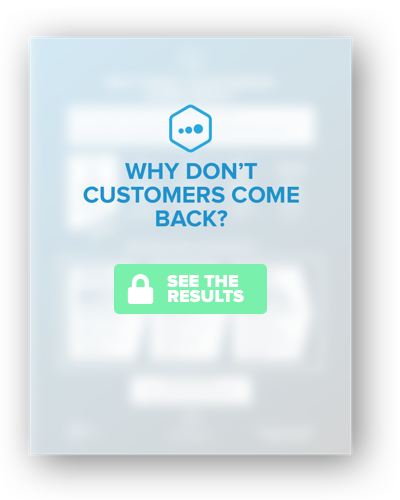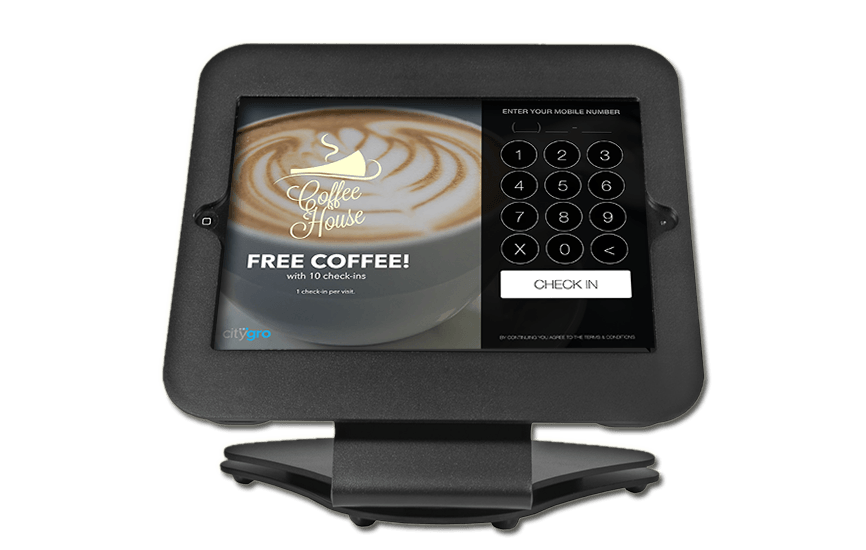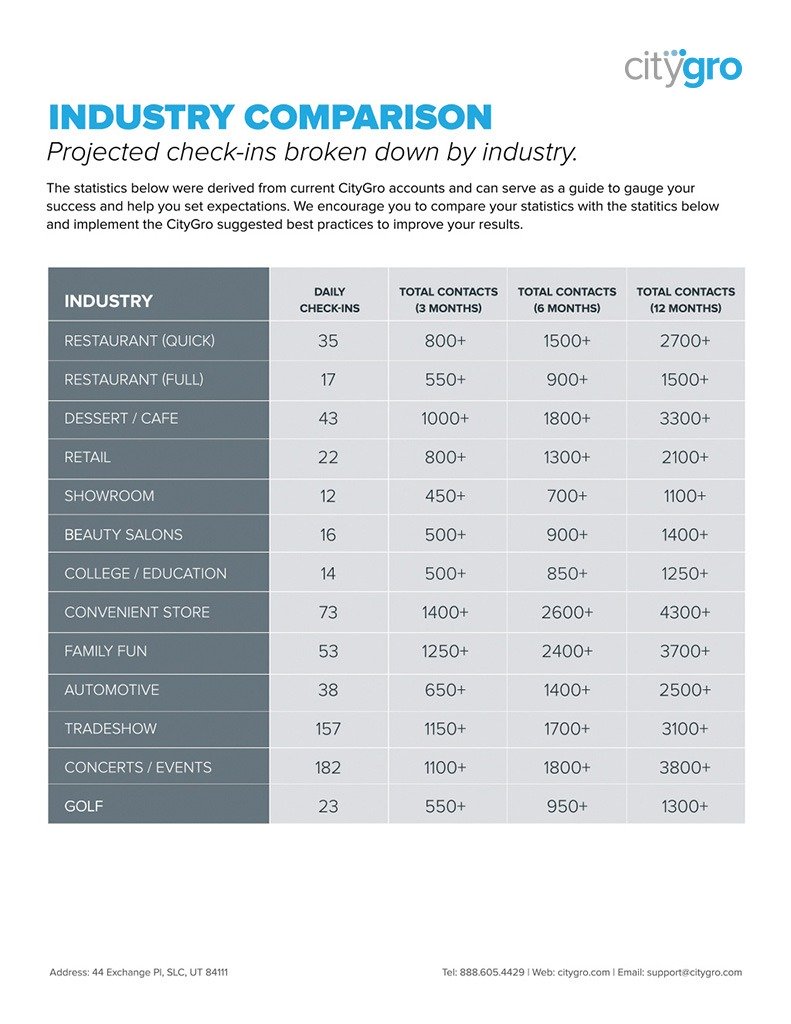10 Practical Steps for Increasing Customer Loyalty
The first steps to gaining loyalty are out of our control. They are found in your culture, your employees, your product/service and the benefit you provide. Once you are creating an environment where loyalty can thrive, CityGro will help accelerate your growth and multiply your efforts like you’ve never seen before while increasing customer loyalty.
1—Greet Every Customer
Greeting your customers is not just a good practice but actually has an effect on how openly your customers interact with you. A simple and positive greeting can affect whether customers feel welcome to look around, ask questions, and even plays into the duration of time customers’ stay in your store.
Practical Advice: Decide on a greeting that fits your customer base and make a policy that every customer is greeted within 10 seconds of walking through the door.
2—Play Upbeat Music
The environment a customer walks into feed directly into the experience they have with your business. Background music replaces that sense of emptiness with a sense of belonging. As long as the volume is appropriate, upbeat background music can add a positive touch to just about any storefront.
Practical Advice: Research your target market and the music they like to listen to and play it softly from open to close.
3—Clean the Bathrooms
Customers notice filth; there is no way around it. In a recent survey, many customers admit to driving the extra mile just to get fuel at a gas station with cleaner restrooms. Whether they are mentally aware of it or not, your restroom is a key place for customers to determine the standard of your business. Make sure your store is cleaned multiple times a day and don’t hesitate to start with your restroom.
Practical Advice: Mandate a regular walk through of your storefront (including bathrooms) several times a day to identify trash. Find the strongest smelling cleaner, grease up your elbow, and make those toilets shine!
4—Collect Contact Info
If you know CityGro, you know how we feel about capturing your customers contact information. Capturing emails and phone numbers from your customers gives you the ability to re-engage them. Your customer contact list, whether phone number or emails, is a direct indicator of your future revenue. If your list is building, there is a good chance your business will be too and you’re well on your way towards increasing customer loyalty.
Practical Advice: Place a fish bowl on your counter where people can drop their business card. Do a weekly drawing for some free product. Sign people up for brochures and catalogues or require people to register for rewards. Whatever you do, make it clear what you will be sending and if you want to send text messages in the future you’ll need a signature of consent.
5—Send a Thank You
Oh the power of a thank you. Appreciation for your customers should never be overlooked, no matter how fast pace your business may be. Our favorite part about a systematized thank you effort is the ability to couple it with bounce back offers, feedback requests, or social media invites. If their experience was a good one, a quick thank you can lead to many things. Don’t miss out on a chance to thank your customers and combine it with a request for action.
Practical Advice: If you capture contact information, send out thank you notes within 24 hours of a customer’s visit and place a link to your Facebook page. If you don’t, have a manager thank each customer before leaving and suggest a bounce-back offer for bringing a friend.
6—Communicate Frequently
Customers want communication, they just don’t want to get spammed. Give your customers any and all relevant information as often as possible. When is too much, you might ask. When opt-out rates start to increase. That is when you know your communication is being marked as spam. How much is too much?
Practical Advice: Start out by identifying all the different ways you can communicate with your customers. Text? Email? Facebook? Twitter? Treat your customers like a relationship and communicate relevant information as often as possible. What promotions do they need to be aware of? What features are you offering? Focus everything on what you feel would be beneficial to your customers, even if it’s not directly related to your business.
7—Ask for feedback
Good business is about providing a value to your customers. The better you know your customers, the better value you will be able to provide. Make every effort to get genuine feedback from your customers through social media, surveys, email, etc. The largest reason customers don’t provide feedback is that they are not asked. Increasing customer loyalty begins with understanding your customers, what better way than for them to tell you themselves?
Practical Advice: Send an email to all of your customers with the subject line “How are we doing?” Make sure to invite them to reply directly to the email. Ask them specifically what you could do better so they don’t send the good and leave out the bad. Pick up the phone and call 3 random customers each week. Tell them your obsession is to make sure your customers are completely satisfied and ask what you can do better.
8—Exceed Expectations
Example: When ordering online, it is very common to see the phrase “ships within 48 hours.” You aren’t blown away when it ships within the expected time but when you receive an email 6 hours later that says, “wahoo, your item shipped early” you’ve got something to talk about. That is what it means to exceed expectations. The trick isn’t setting low expectations; it’s setting impressive expectations and delivering an even more impressive service to further begin increasing customer loyalty.
Practical Advice: Identify as many customer expectations as possible and implement in-house policies that are a step above what your customers are promised. Think delivery time, product value, quality of service, etc. If you promised a 2-day delivery, and it’s simply not possible to get it to them any quicker, deliver it gift-wrapped. The point is to exceed expectations.
9—Create 5 Talking Points
Did you know Disneyland does not sell chewing gum because Walt Disney did not want guests to step in stickiness around the park? Sharing interesting facts is simply something that humans like to do. It gives us something to talk about and builds self-confidence when we can share things that others don’t know. The only problem is that we run out of interesting things to say. This creates an opportunity for your business to share something unique, tie it into your business and spread the word.
Practical Advice: Identify 5 interesting facts that you can tie to your business and post them in your store. Think of unique and interesting facts about your business history, product, buildings, etc., and give your customers something to talk about.
10—Be Consistent
Consistency is key if you want to grow your business. Form a habit of excellence by identifying your goals and documenting them in a place that you review regularly. These goals will become the breath of your company and set your business above and beyond the rest.
Practical Advice: Create a one-page checklist of key values and initiatives. Use 18-point font and keep it short and easy to read. Hang this document up where it can be reviewed daily. Review this list with employees, in trainings, and use it when you are hiring. Don’t aim to have excellent days, aim to be excellent every day.
We hope you’ve found our 10 Practical Steps for Increasing Customer Loyalty useful. The CityGro Team automates these same strategies to help thousands of small businesses thrive. By automating loyalty-marketing strategies, CityGro boosts sales, increases customer frequency, and saves a whole lot of time. We hope to hear from you when you are ready to take your business to the next level. —Team CityGro
View the presentation in slideshow format on SlideShare







 Get this section from Jon. Get this section from Jon. Get this section from Jon. Get this section from Jon. Get this section from Jon. Get this section from Jon. Get this section from Jon. Get this section from Jon. Get this section from Jon.
Get this section from Jon. Get this section from Jon. Get this section from Jon. Get this section from Jon. Get this section from Jon. Get this section from Jon. Get this section from Jon. Get this section from Jon. Get this section from Jon.

